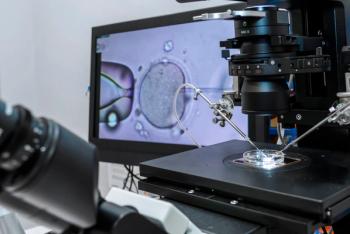
Underdiagnosis and undertreatment of menopause symptoms reported
In a recent study, only 22.7% of women had menopause symptoms documented in their electronic health record, highlighting low rates of diagnosis and treatment.
There is a lack of timely identification and treatment of menopause symptoms in primary care settings, according to a recent study published in Menopause, the journal of The Menopause Society.1
Hot flashes occur during the menopause transition in approximately 75% of women. These symptoms adversely impact women’s quality of health, leading to missed work and lost work productivity. This indicates a need for timely identification and treatment to improve these symptoms.1
Despite the frequency of bothersome menopause symptoms and the alleviating effects of treatment, they remain inadequately addressed in primary care settings. There are multiple potential sources of this issue, such as women avoiding the conversation with their health care provider because of prior experience being dismissed when discussing menopause.1
There is also a lack of knowledge about the availability of safe and effective treatment of menopause symptoms among both patients and health care providers. Safety concerns may lead patients and providers to be hesitant toward discussing hormone therapy (HT), despite data indicating significant efficacy and relative safety.1
Untreated symptoms of menopause may pose significant health risks.2 A recent study linked hot flashes during the second half of the night with increased heart disease risk, highlighting the adverse effects of inadequate treatment.
The study evaluated outcomes of objectively measured hot flashes during the first half of the night vs the second half. Participants included healthy perimenopausal women aged 43 to 54 years without hot disease or taking treatment for hot flashes.2
Of hot flashes experienced by participants, 41% occurred during the first half of the night and 59% during the second half. REM sleep occurs during the second half of the night, and disruption of REM sleep increases the risk of heart disease. Therefore, the increased prevalence of heart flashes during the second half of the night can be linked to increased heart disease risk.2
Investigators from The Menopause Society conducted a study to evaluate common causes of undiagnosed and untreated menopause symptoms.1 Participants included 229 women in a primary care setting reporting moderate to very severe hot flashes. Data about unrecognized symptoms was obtained through surveys completed by these women.
Documented symptoms of menopause in an electronic health record were reported in only 22.7% of women. Additionally, of women who had not previously used systemic HT without contraindications, only 6.1% reported initiation of systemic HT use.1
The safety concerns of HT may be addressed through the use nonhormonal methods, many of which have been proven effective in women with contraindications to HT use. A nonhormone prescription therapy rate of 14.8% was reported among women without contraindications to HT.1
Investigators concluded there is a lack of discussion and consideration toward appropriate hot flash management. Improved methods of identifying bothersome symptoms among midlife women in primary care clinics is necessary to provide appropriate treatment options such as HT.1
“This study highlights gaps in menopause symptom documentation in the electronic health record and in treatment of symptoms,” said Stephanie Faubion, MD, MBA, medical director for The Menopause Society. “Additional efforts are needed to educate women and the health care professionals caring for them on the importance of identifying and treating bothersome menopause symptoms in the primary care setting.”1
References
- New study identifies gaps in menopause care in primary care settings. The Menopause Society. October 1, 2024. Accessed October 2, 2024.
https://menopause.org/press-releases/new-study-identifies-gaps-in-menopause-care-in-primary-care-settings - Krewson C. Hot flashes disrupting REM sleep linked to heart disease risk. Contemporary OB/GYN. September 10, 2024. Accessed October 2, 2024.
https://www.contemporaryobgyn.net/view/hot-flashes-disrupting-rem-sleep-linked-to-heart-disease-risk
Newsletter
Get the latest clinical updates, case studies, and expert commentary in obstetric and gynecologic care. Sign up now to stay informed.
















